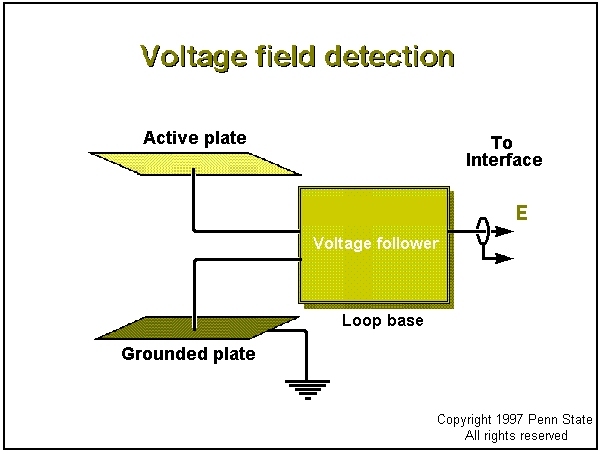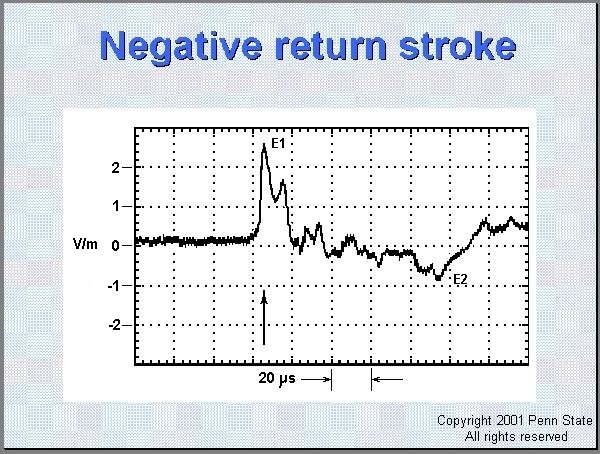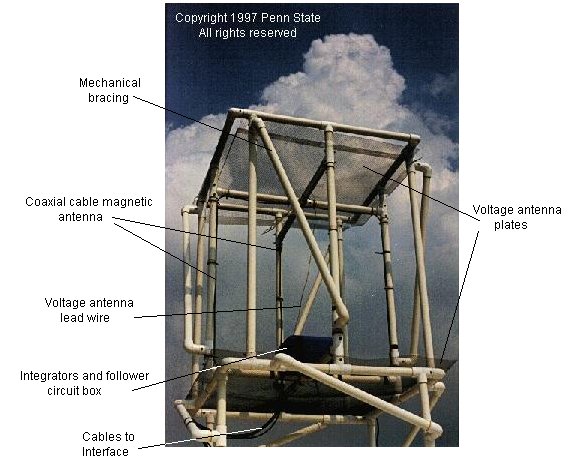




Stroke polarity is
identified using the voltage component (e-field) of the radiated field. This must
be done to eliminate some 180-degree errors in the direction to the stroke.
Because the magnetic fields of the occasional positive return strokes are
of reversed polarity to those from negative return strokes, their signals
would appear to arrive from the opposite direction of their true source.
Fortunately, an e-field antenna readily identifies stroke polarity.

An initial positive
waveform excursion (E1) indicates a negative return stroke:

while an initial negative waveform excursion (E1), which would be inverted compared with that shown above, indicates a positive return stroke. Ultimately, the computer algorithm simply ignores the occasional positive strokes by using the signals provided by the e-field antenna. A voltage follower in the box at the antenna array base converts the high-impedance signal from the plates to a low source impedance form suitable for sending via coaxial cable to the Interface circuits.
In the photograph below
of the Walker Building array, the coaxial cable loops of the magnetic field
antenna may be seen taped to PVC supporting pipes. The pipe frame
also supports horizontal hardware clothe plates (seen at the top and near
the bottom of the framework) composing the e-field antenna.
The dark box resting on the lower plate houses the magnetic signal integrators
and the e-field voltage follower. The diagonal PVC pipes are simply
bracing to withstand strong winds.
